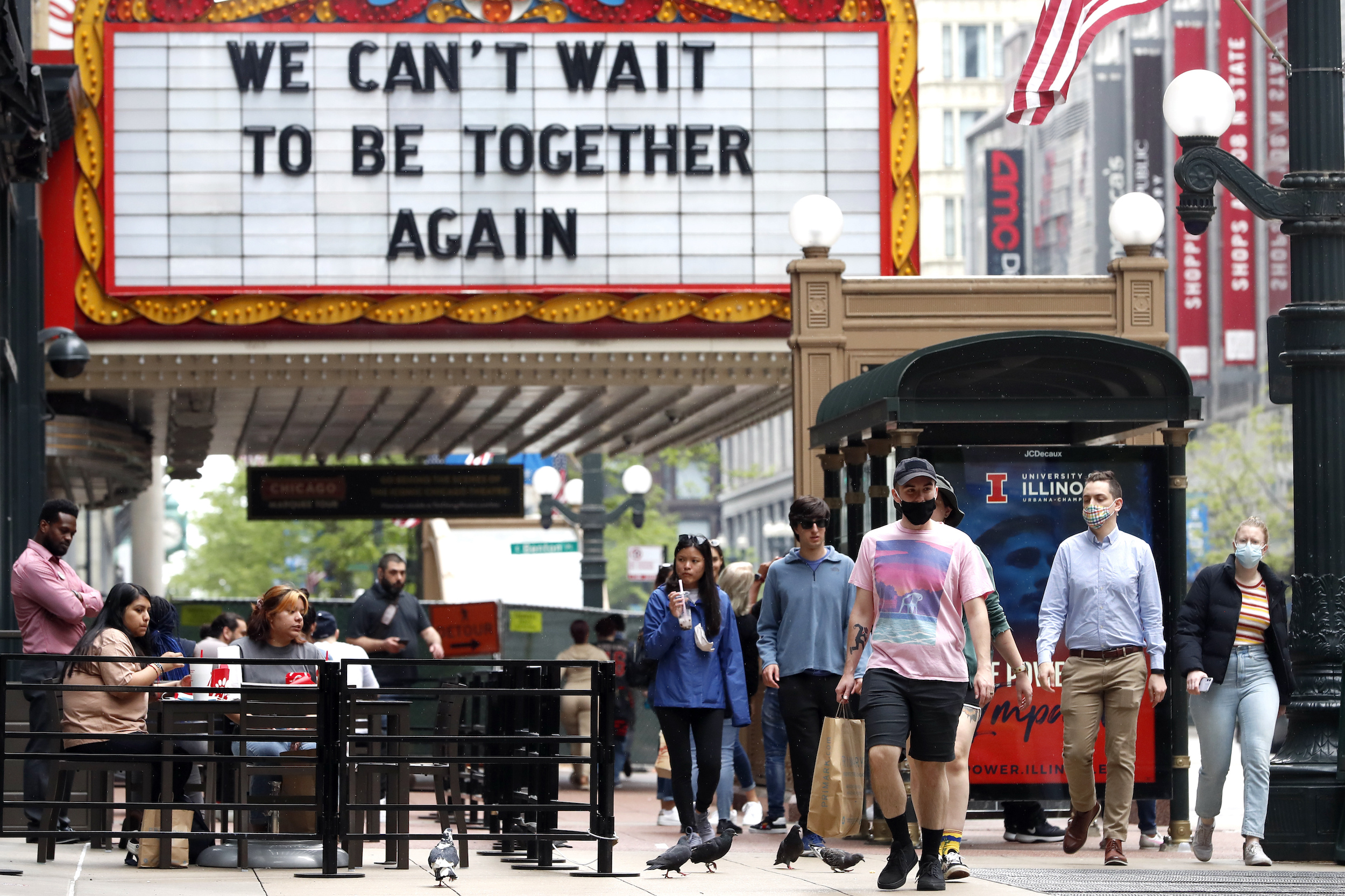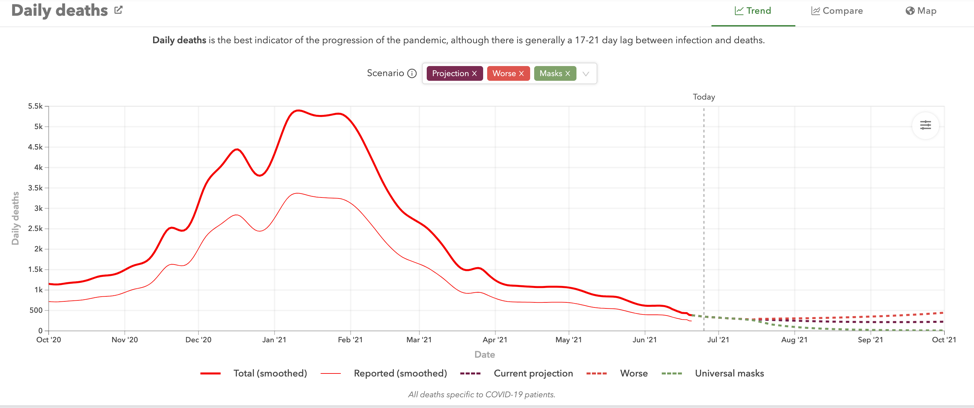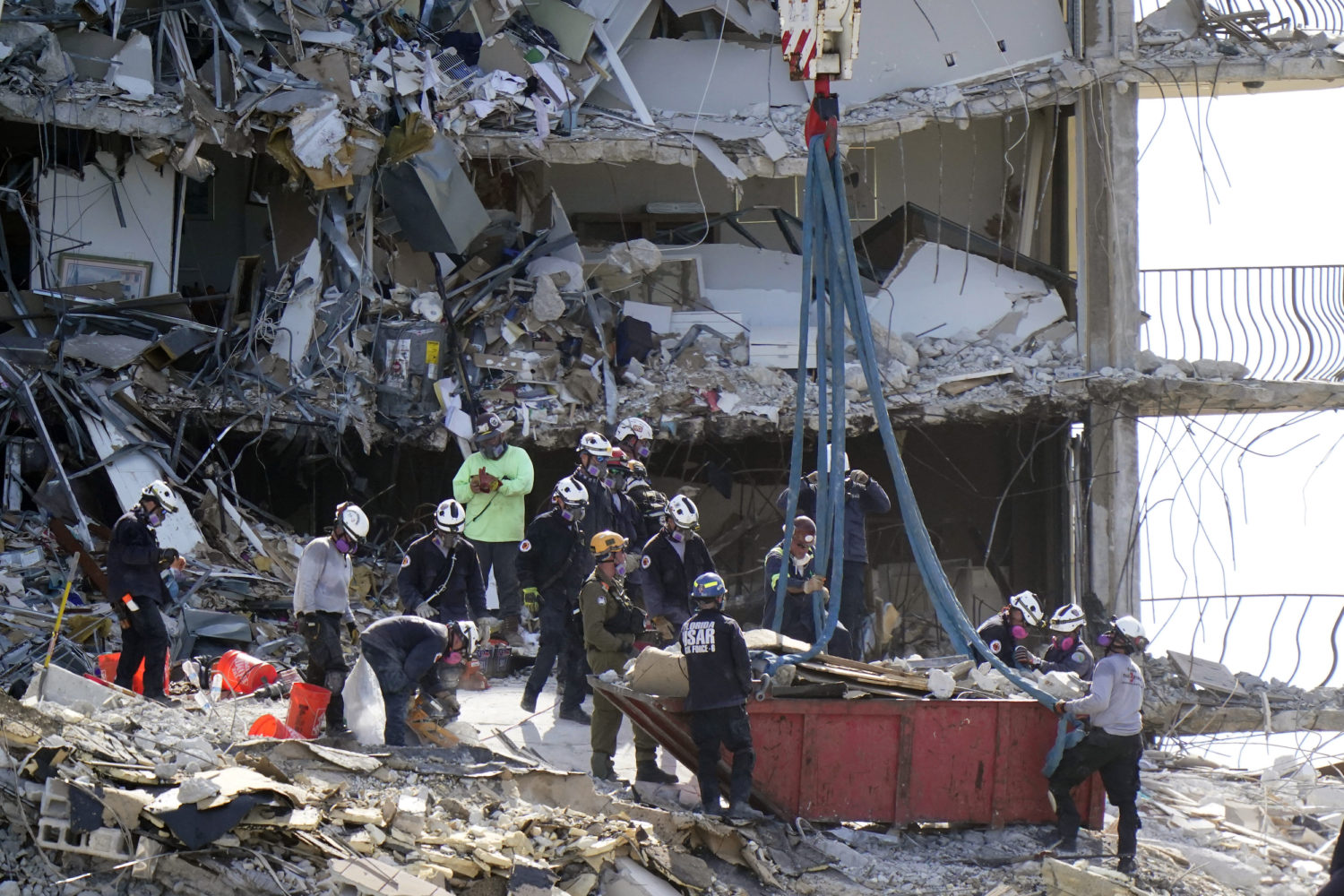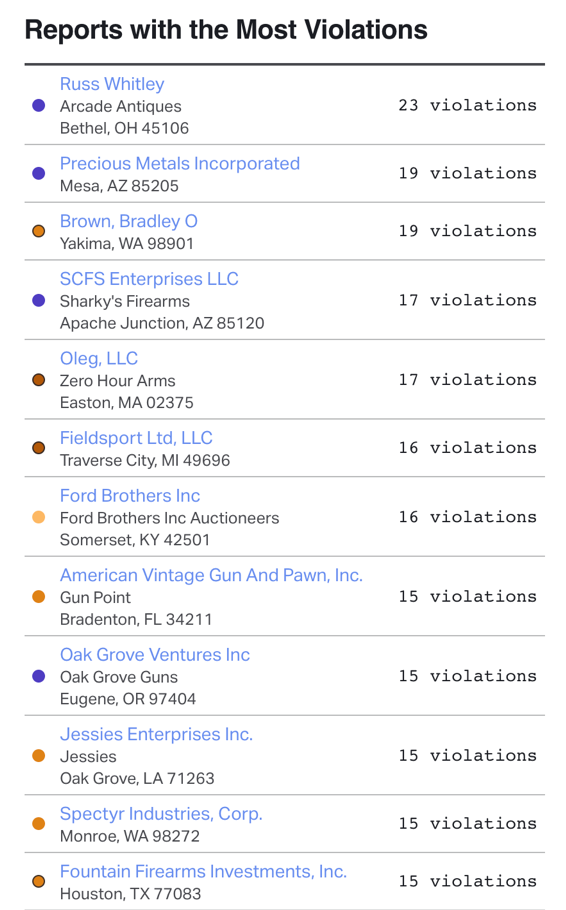 Covering COVID-19 is a daily Poynter briefing of story ideas about the coronavirus and other timely topics for journalists, written by senior faculty Al Tompkins. Sign up here to have it delivered to your inbox every weekday morning.
Covering COVID-19 is a daily Poynter briefing of story ideas about the coronavirus and other timely topics for journalists, written by senior faculty Al Tompkins. Sign up here to have it delivered to your inbox every weekday morning.
This week will be filled with the painful reality that it will be excavators, not rescue workers, who will likely find the more than 100 missing people presumed buried in the Surfside, Florida, condo that collapsed last week. The Miami Herald compiled a list with photographs of many of the 150 or so people who are unaccounted for.
The Herald built a 3D animation of the collapse and reports:
Six engineering experts interviewed by the Miami Herald on Saturday said that based on the publicly available evidence — including building plans, recent inspection reports, photos of debris, an eyewitness, and a surveillance video of the collapse — a structural column or concrete slab beneath the pool deck likely gave way first, causing the deck to collapse into the garage below, forming a crater beneath the bulky midsection of the tower, which then caved in on itself.
The city of Surfside has compiled a growing thread of public documents, including some that list recent inspections for the building. A key question in the documents is how a city inspection in August 2018 could show the building to be in generally good structural shape but another inspection in October 2018 could find major structural damage to the building. WFOR reports that one engineer estimated it would cost $9 million to repair those problems, and the work was not done.
95% of billions meant to rescue entertainment venues is stuck in red tape

People walk near The Chicago Theatre, Tuesday, May 18, 2021, in Chicago’s famed Loop. (AP Photo/Shafkat Anowar)
Here is one problem that is so clear, so ridiculous that even Sens. Ted Cruz and Amy Klobuchar signed a letter complaining about it.
Congress allotted $16 billion to help rescue entertainment venues like concert stages and theaters from being permanently shut down by the pandemic. A grand total of 5% of the money has made it to the businesses that need it.
WCCO-TV in Minneapolis reports:
Data from the U.S. Small Business Administration (SBA) shows more than 14,000 total have applied seeking $11.5 billion in relief, but the federal agency has awarded only 411 grants totaling $304 million.
The SBA — tasked with reviewing, approving and disbursing the grants — said it recognizes the rollout of the aid has fallen short of expectations. It’s making operational changes, including added dozens of new staff, and bringing in others who successfully launched a program designed to help struggling restaurants, a spokeswoman said.
KQED in San Francisco reports:
“In all honesty, independent venues in San Francisco are probably in a worse spot today than they were even just a couple months ago because of this delayed funding,” says Casey Lowdermilk, assistant general manager of Bill Graham Civic Auditorium and an organizer with San Francisco Venue Coalition and National Independent Venue Association. “I’m hearing from venues that they don’t have enough capital to buy liquor to stock their bars, they don’t have enough capital to pay artist deposits.
“The feel to the whole thing has been rather adversarial, as opposed to a program that was designed to help businesses,” says Christopher White, owner of San Francisco’s Rickshaw Stop. “It feels as if there is an enormous amount of distrust from the federal agencies about our industries.”
Members of Congress have gotten involved and are pushing the SBA to get things moving. That coalition includes senators as politically far apart as Cruz and Klobuchar. They sent a letter that says:
“It has been nearly six months since Congress passed the Save our Stages Act, nearly two months since the second launch of the program, and 51 days since the Small Business Administration (SBA) began receiving applications.”
“Bureaucratic process cannot stand in the way of getting these desperately needed funds out the door.”
The stalemate is hindering plans to reopen for many of these spaces, even after COVID restrictions for live events have been eased.
“We made a lot of plans based on the assumption we’d be getting the [grant],” said Ward Johnson, co-owner of the Parkway Theatre in south Minneapolis, who hired back staffers and booked performers to prepare for a busy fall.
“The longer it takes, the more concerned we’ve become about the finances.”
Nearly all COVID-19 deaths now are among the unvaccinated
I think that since we will fall short of President Joe Biden’s goal that 70% of Americans are vaccinated against COVID-19 by this weekend, it is useful to point out that right now, nearly every person who dies from the virus is unvaccinated. The Associated Press calculates:
An analysis of available government data from May shows that “breakthrough” infections in fully vaccinated people accounted for fewer than 1,200 of more than 853,000 COVID-19 hospitalizations. That’s about 0.1%.
And only about 150 of the more than 18,000 COVID-19 deaths in May were in fully vaccinated people. That translates to about 0.8%, or five deaths per day on average.
It is true that there are still five states that do not report “breakthrough” infections, so the actual number may be a little bit higher, but not likely by much.
Centers for Disease Control and Prevention Director Dr. Rochelle Walensky put it this way: “Nearly every death, especially among adults, due to COVID-19, is, at this point, entirely preventable.”
I suspect you are as tired of saying that as some people may be tired of hearing it. But the newest forecasts from the Institute for Health Metrics and Evaluation say if we do not increase our vaccination rate, in all probability we will see infections and deaths climb again in a few months when classrooms, campuses and offices begin to fill up and we move back indoors in the autumn and winter months.

The Institute for Health Metrics and Evaluation is an independent population health research center at UW Medicine, part of the University of Washington. (IHME)
Home-based gun dealers flaunt ATF regulations
When President Biden mentioned the need for federal regulations to toughen up on gun dealers who ignore gun sale laws, you might have thought about the retailers who run reputable gun stores. But some of the worst operators are people who sell guns out of their homes. The Trace reports:
Kitchen-table dealers are legal if they meet the same basic requirements for a federal firearms license (FFL) as any other dealer: a $200 fee and a photo, fingerprint, and background check.
The review of recent inspections found violations across the country, from a dentist in West Bridgewater, Massachusetts, cited for failing to keep accurate records to a church pastor for illegally selling guns out of his vehicle in Albuquerque, New Mexico.
With low licensing fees and minimal barrier to entry to establish a business, kitchen-table dealers boomed throughout the 1970s, ’80s and ’90s even before the proliferation of online sellers. By 1992, the majority of the nation’s 250,000 gun dealers were based in homes or offices, according to the Violence Policy Center, a nonprofit group that advocates for stricter gun regulations.
In 1990, an ATF study of the top sellers of guns linked to Detroit crime scenes found that home-based sellers occupied six of the 10 top spots, including first and second. By 1993, 74 percent of all dealers operated out of their homes, the agency estimated.
You can “get local” by looking at the 2,000 gun dealer inspection reports this investigative reporting compiled. Here is a sample of some of the top violators in the data:
FDA’s backlogged inspections
The pandemic caused a big backlog in the Food and Drug Administration’s inspections of pharmaceutical and food factories. Fierce Pharma reports:
Forced by COVID-19 to suspend or adjust business as usual, the FDA accrued a massive backlog of facility inspections in 2020. Now, the agency is laying the groundwork to get its site reviews back on track.
Between March 2020 and March 2021, the FDA conducted a total of 821 “mission critical” inspections and 777 priority domestic inspections, the regulator said in a recent report on its pandemic-era oversight. Now, to catch up on last year’s backlog, the FDA says it needs to complete 26,250 site inspections in the fiscal year ending September 30. Most of the outstanding site inspections are for food producers.
“[T]here is no doubt that the pandemic has had an impact on our inspectional work,” Janet Woodcock, M.D., acting commissioner of the FDA, said in a newly released “resiliency roadmap.”
COVID-19 made us miss the chance meetings with others at the office — but maybe we didn’t miss that much after all
I am one who has opined that a cost of working at home is that we do not have those chance meetings when we bump into our colleagues and share ideas or information that results in something important. Well, it turns out there is little proof that such chance meetings were all that important. Look at this passage in The New York Times:
“There’s credibility behind the argument that if you put people in spaces where they are likely to collide with one another, they are likely to have a conversation,” said Ethan S. Bernstein, who teaches at Harvard Business School and studies the topic. “But is that conversation likely to be helpful for innovation, creativity, useful at all for what an organization hopes people would talk about? There, there is almost no data whatsoever.”
“All of this suggests to me that the idea of random serendipity being productive is more fairy tale than reality,” he said.
In fact, Bernstein points out, at just about the time that workplaces were using these open workspaces where people were supposed to be able to freely collaborate with each other, instead they put on headphones to cut down the noise. The open office spaces actually led to dramatically fewer face-to-face conversations. And the Times includes some other brilliant observations about how remote work can be hugely more inclusive than at at the office where we might have those transformative interactions:
“When everyone has the same small box on the screen, everyone has an equal seat at the table, literally,” said Barbara Messing, employee experience officer at Roblox, the online gaming company, which is staying remote two days a week, and letting people work wherever they want two months a year.
Also, remote companies can hire from a more diverse group — people for whom long hours in the office wouldn’t have worked, or people who live elsewhere: “If you only recruit within a 20-mile distance, you ain’t getting diversity,” said John Sullivan, an H.R. consultant.
I really appreciate essays like this one that make us challenge conventional wisdom.
We’ll be back tomorrow with a new edition of Covering COVID-19. Are you subscribed? Sign up here to get it delivered right to your inbox.








